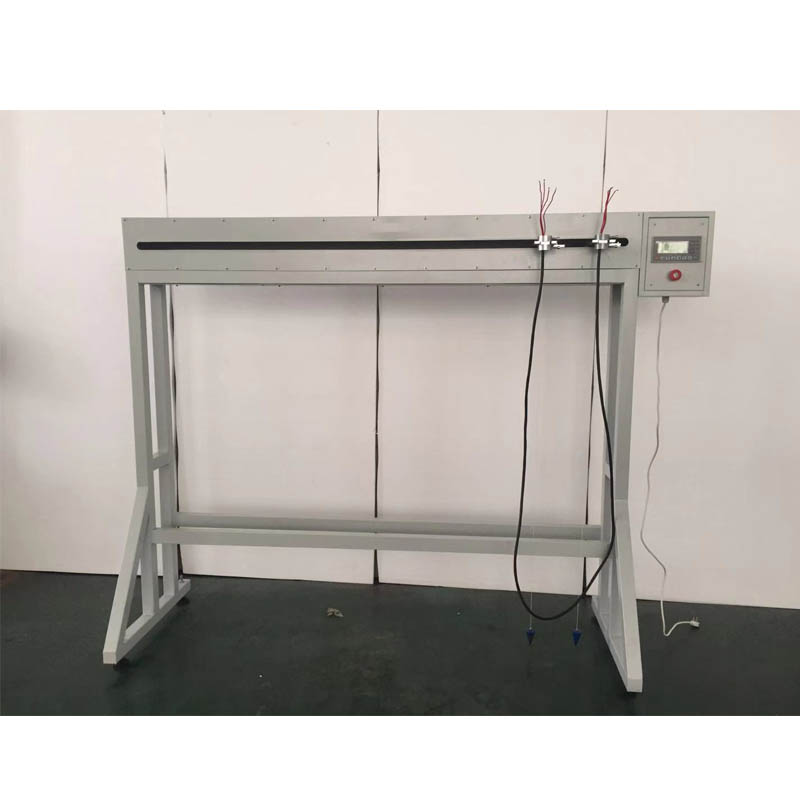Cable Heat Pressure Testing Services for Reliable Performance and Quality Assurance
Cable Heat Pressure Testing Companies Ensuring Safety and Reliability in Electrical Systems
In the modern world, the role of electricity in powering everything from homes to industrial machinery cannot be overstated. As a result, the quality, safety, and reliability of electrical cables are paramount. One crucial method for evaluating the resilience and efficiency of these cables is through heat pressure testing. This article will delve into the significance of heat pressure testing for cables, the process involved, and highlight key players in the industry, ensuring that companies understand the value and necessity of this testing method.
What is Heat Pressure Testing?
Heat pressure testing, often referred to as thermal and pressure testing, is a standard procedure used to assess the performance of electrical cables under conditions that simulate real-world scenarios. This testing method subjects cables to elevated temperatures and pressures to identify potential weaknesses or performance failures before they are deployed in critical applications. The aim is to ensure that cables can handle extreme conditions without degrading or failing, which is essential for maintaining safety standards and operational efficiency.
Importance of Heat Pressure Testing
1. Safety Assurance Faulty cables can lead to catastrophic failures, including fires and electrical outages. Heat pressure testing helps in identifying defects that could compromise safety. By ensuring that cables meet specific performance requirements, testing reduces the risk of accidents during operation.
2. Compliance with Standards Various industries are governed by regulatory frameworks that mandate strict adherence to safety standards. Heat pressure testing ensures that cables meet national and international quality standards, providing documentation and certification that help organizations maintain compliance with regulations, thus avoiding legal issues and potential fines.
3. Performance Verification Beyond safety, heat pressure testing assesses the overall performance of cables under extreme conditions. This information is crucial for manufacturers and users alike, as it informs decisions about the suitability of specific cable types for particular applications.
4. Cost Savings Detecting issues early through heat pressure testing can save companies significant amounts of money in the long run. By identifying defects before installation, organizations can avoid costly repairs, replacements, or disasters caused by cable failures.
The Testing Process
The cable heat pressure testing process involves several key steps
1. Preparation Samples of the cables are prepared by removing any outer insulation and ensuring they meet the specific testing criteria. This could involve cutting them to standard lengths, applying necessary terminal connections, and ensuring they are free of damage.
cable heat pressure test companies

2. Testing Setup Cables are connected to a testing apparatus that can create the necessary heat and pressure conditions. This setup often includes monitoring equipment to track temperature and pressure in real-time.
3. Execution of Tests The testing begins by gradually increasing the temperature and pressure while closely monitoring the cables. Various parameters such as insulation integrity, heat dissipation, and structural soundness are assessed during this phase.
4. Analysis and Reporting After completing the tests, the cables are inspected for any signs of damage or degradation. Results are compiled into a detailed report that outlines the performance of each cable sample, highlighting any concerns and issuing recommendations for further action.
Leading Companies in the Industry
Several companies specialize in cable heat pressure testing, offering a range of services to ensure the safety and quality of electrical cables. Here are some notable players in the field
1. SGS A global leader in inspection, verification, testing, and certification, SGS offers heat pressure testing as part of its extensive suite of services, ensuring cables meet rigorous standards before they reach the market.
2. Intertek With a strong reputation for testing and certification, Intertek provides comprehensive cable testing solutions, including heat pressure testing, assisting manufacturers in meeting both safety and efficiency requirements.
3. UL (Underwriters Laboratories) Known for its commitment to safety, UL conducts thorough heat pressure tests as part of its cable certification services, helping clients ensure their products are trustworthy and compliant with regulations.
4. TÜV Rheinland This global leader provides a wide range of testing services, including heat pressure testing for electrical cables to ensure they meet the necessary international safety standards.
Conclusion
Cable heat pressure testing is an essential process in the electrical cable industry, providing crucial insights into the safety and reliability of cable products. As companies across various sectors strive to minimize risks and ensure compliance with safety regulations, the demand for reputable testing services continues to grow. By partnering with established testing companies, organizations can ensure that they deliver high-quality, safe products to the market, ultimately contributing to a safer and more efficient electrical infrastructure.
-
Why the Conductor Resistance Constant Temperature Measurement Machine Redefines Precision
NewsJun.20,2025
-
Reliable Testing Starts Here: Why the High Insulation Resistance Measuring Instrument Is a Must-Have
NewsJun.20,2025
-
Flexible Cable Flexing Test Equipment: The Precision Standard for Cable Durability and Performance Testing
NewsJun.20,2025
-
Digital Measurement Projector: Precision Visualization for Modern Manufacturing
NewsJun.20,2025
-
Computer Control Electronic Tensile Tester: Precision and Power for the Modern Metal Industry
NewsJun.20,2025
-
Cable Spark Tester: Your Ultimate Insulation Assurance for Wire and Cable Testing
NewsJun.20,2025
 Copyright © 2025 Hebei Fangyuan Instrument & Equipment Co.,Ltd. All Rights Reserved. Sitemap | Privacy Policy
Copyright © 2025 Hebei Fangyuan Instrument & Equipment Co.,Ltd. All Rights Reserved. Sitemap | Privacy Policy
